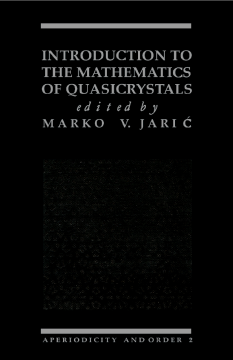
Additional Information
Book Details
Abstract
Introduction to the Mathematics of Quasicrystals provides a pedagogical introduction to mathematical concepts and results necessary for a quantitative description or analysis of quasicrystals. This book is organized into five chapters that cover the three mathematical areas most relevant to quasicrystals, namely, the theory of almost periodic functions, the theory of aperiodic tilings, and group theory.
Chapter 1 describes the aspects of the theory of tiling in two- and three-dimensional space that are important for understanding some of the ways in which “classical mathematical crystallography is being generalized; this process is to include possible models for aperiodic crystals. Chapter 2 examines the non-local nature of assembly “mistakes that might have significance to the quasicrystals growth. This chapter also describes how closely a physical quasicrystal might be able to approximate a three-dimensional version of tilings. Chapter 3 discusses the theoretical background and concepts of group theory of icosahedral quasicrystals. Chapter 4 presents the local properties of the three-dimensional Penrose tilings and their global construction is described through the projection method. This chapter emphasizes the relationship between quasiperiodic sets of points and quasiperiodic tiling. Chapter 5 explores the analysis of defects in quasicrystals and their kinetics, as well as some properties of the perfect system.
This book is of great value to physicists, crystallographers, metallurgists, and beginners in the field of quasicrystals.
